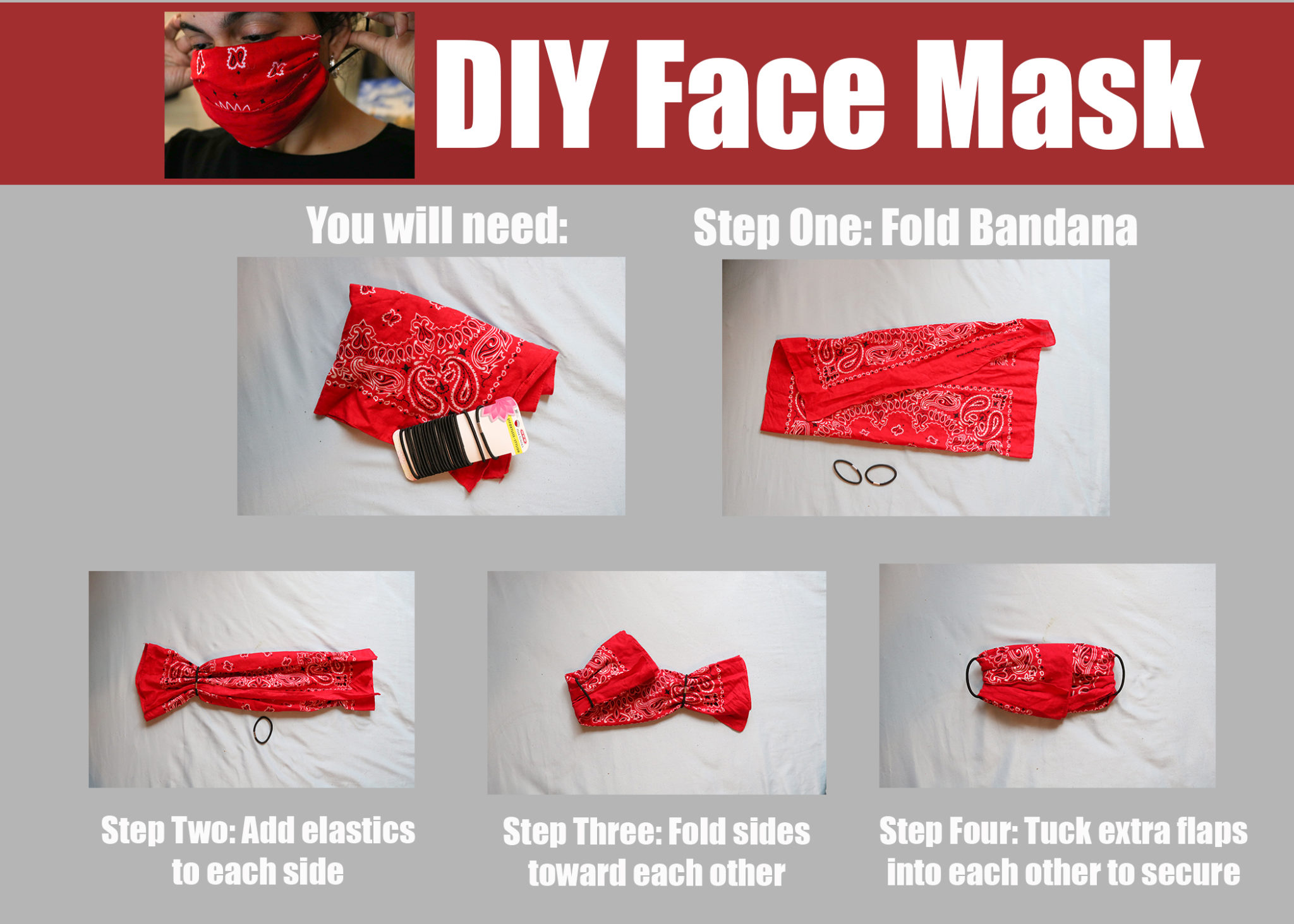
There are no more excuses for not using a face covering in public. The Rider sought out ideas to create cloth masks: one with a sewing machine and another without. Both options help protect yourself and others around you.
The Centers for Disease Control and Prevention (CDC) “is one of the major operating components of the Department of Health and Human Services,” according to its website. The center has provided instructions and recommendations on how to make and use face coverings.
The CDC advises “the use of simple cloth face coverings to slow the spread of the virus and help people who may have the virus and do not know it from transmitting it to others.”
Face masks can be made at home from household items and low-cost materials, such as a bandana, hand towel, an old scarf or T-shirt. Surgical masks or N-95 respirators are not recommended, according to the CDC. The organization advises that surgical masks and respirators be reserved for health care workers.
Dr. Jerome Adams, surgeon general of the United States, demonstrates how to create cloth face masks in easy steps in a 45-second video uploaded April 3 on the CDC’s YouTube channel.
https://www.youtube.com/watch?v=tPx1yqvJgf4&feature=youtu.be
For a PDF version of the instructions and recommendations, click here.
As previously reported by The Rider, Dr. Jose Campo Maldonado, an assistant professor of Internal Medicine in the UTRGV School of Medicine, said personal face masks should not be the only precaution people need to take with the virus.
“I think it’s a measure that we can take because it’s not too costly, but they’re not expected to be the final solution,” Campo Maldonado said in an interview April 8.
The theatre department is also helping the public create cloth face masks.
Elizabeth Polley, UTRGV Theatre Department costume shop manager, said she made about 75 to 90 masks.
Polley shows how to make cloth face masks using a sewing machine in a 7-minute video uploaded April 9 on the UTRGV Theatre Department’s YouTube channel.
She also provided The Rider a PDF version on how to make an adult mask with ties. To view the PDF, click here.
“The cloth face masks … remind people who are wearing them not to touch their nose, or their mouth … their face,” Polley said.
She said she recommends using 100% cotton to create the masks. Other options include cutting T-shirts and bandanas made from cotton.olley said she recommends putting the material in the washing machine with normal detergent and hot water before creating the mask. To dry it, use a blow dryer.
The costume shop manager also recommends using delicate clothes laundry bags so the elastic or fabric ties do not get caught or tangled in the washing machine.
Asked what the easiest step is when making a cloth face mask, Polley replied, “I like picking out the fabric. … It’s a fun way to express yourself. … You can even make, you know, a couple different ones. And then, you can kind of mix them out with your outfit.”
For more information from the CDC about face coverings, click here.





